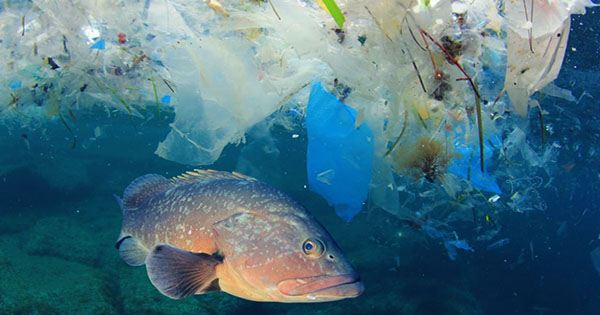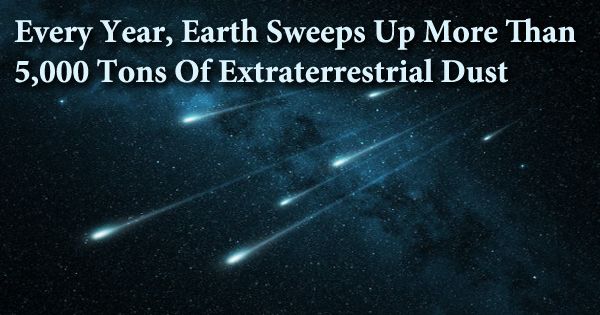A dormant volcano is a volcano that has not erupted for a long period of time but still has the potential to erupt again in the future. Unlike extinct volcanoes, which are unlikely to erupt again, dormant volcanoes are still considered active, as they have shown signs of activity in the past and may exhibit signs of activity in the future.
Volcanoes draw plenty of attention when they erupt. Yet, recent study headed by the University of Washington reveals that during their dormant stages, volcanoes emit an unexpectedly large amount of their climate and atmosphere-altering gases.
Volcanoes silently discharge at least three times as much sulfur into the Arctic atmosphere as predicted by current climate models, according to data from a Greenland ice core.
The study, led by the University of Washington and published Jan. 2 in Geophysical Research Letters, has implications for better understanding Earth’s atmosphere and its relationship with climate and air quality.
“We found that on longer timescales the amount of sulfate aerosols released during passive degassing is much higher than during eruptions,” said first author Ursula Jongebloed, a UW doctoral student in atmospheric sciences. “Passive degassing releases at least 10 times more sulfur into the atmosphere, on decadal timescales, than eruptions, and it could be as much as 30 times more.”
The layers of an ice core from central Greenland were examined by a global team to determine the sulfate aerosol concentrations between 1200 and 1850. Because marine phytoplankton were traditionally thought to be the primary source of atmospheric sulfate in pre-industrial periods, the authors decided to examine the sulfur released by these organisms.
There’s sort of a ‘diminishing returns’ effect of sulfate aerosols, the more that you have, the less the effect of additional sulfates. When we increase volcanic emissions, which increases the baseline of sulfate aerosols, we decrease the effect that the human-made aerosols have on the climate by up to a factor of two.
Ursula Jongebloed
“We don’t know what the natural, pristine atmosphere looks like, in terms of aerosols,” said senior author Becky Alexander, a UW professor of atmospheric sciences. “Knowing that is a first step to better understanding how humans have influenced our atmosphere.”
Since it is simpler to discern between volcanic and marine sources during the pre-industrial era, the team purposefully avoided any significant volcanic eruptions during this time.
“We were planning to calculate the amount of sulfate coming out of volcanoes, subtract it and move on to study marine phytoplankton,” Jongebloed said. “But when I first calculated the amount from volcanoes, we decided that we needed to stop and address that.”
The Greenland Ice Sheet’s central ice core preserves emissions from sources throughout a large area of North America, Europe, and the nearby waters. The authors anticipate that this result would hold true elsewhere even if it only relates to geologic sources found in that region, such as Icelandic volcanoes.
“Our results suggest that volcanoes, even in the absence of major eruptions, are twice as important as marine phytoplankton,” Jongebloed said.
The finding that sulfur leaks from dormant volcanoes at rates up to three times greater than previously thought is crucial for efforts to forecast past, current, and future climate. Some solar radiation is blocked by aerosol particles, which can come from factories, vehicles, or volcanoes.
The rise and fall of human emissions, which peaked with the 1970s acid rain and subsequently declined with the Clean Air Act and ever-stricter air quality rules, may have had less of an impact on temperature than previously thought if natural aerosol levels are higher.
“There’s sort of a ‘diminishing returns’ effect of sulfate aerosols, the more that you have, the less the effect of additional sulfates,” Jongebloed said. “When we increase volcanic emissions, which increases the baseline of sulfate aerosols, we decrease the effect that the human-made aerosols have on the climate by up to a factor of two.”
That means Arctic warming in recent decades is showing more the full effects of rising heat-trapping greenhouse gases, which is by far the main control on Earth’s average temperature.
“It’s not good news or bad news for climate,” Jongebloed said of the result. “But if we want to understand how much the climate will warm in the future, it helps to have better estimates for aerosols.”
Better estimates for aerosols can improve global climate models.
“We think that the missing emissions from volcanoes are from hydrogen sulfide,” said Alexander, referring to the gas that smells like rotten eggs. “We think that the best ways to improve these estimates of volcanic emissions is to really think about the hydrogen sulfide emissions.”
The U.S. National Science Foundation, NASA and the National Natural Science Foundation of China funded the study. Other UW co-authors are undergraduate students Sara Salimi and Shana Edouard, doctoral student Shuting Zhai, research scientist Andrew Schauer, and professor Robert Wood.
Other co-authors are Lei Geng, a former UW postdoctoral researcher now at the University of Science and Technology of China; Jihong Cole-Dai and Carleigh Larrick at South Dakota State University; Tobias Fischer at the University of New Mexico; and Simon Carn at Michigan Technological University.
















